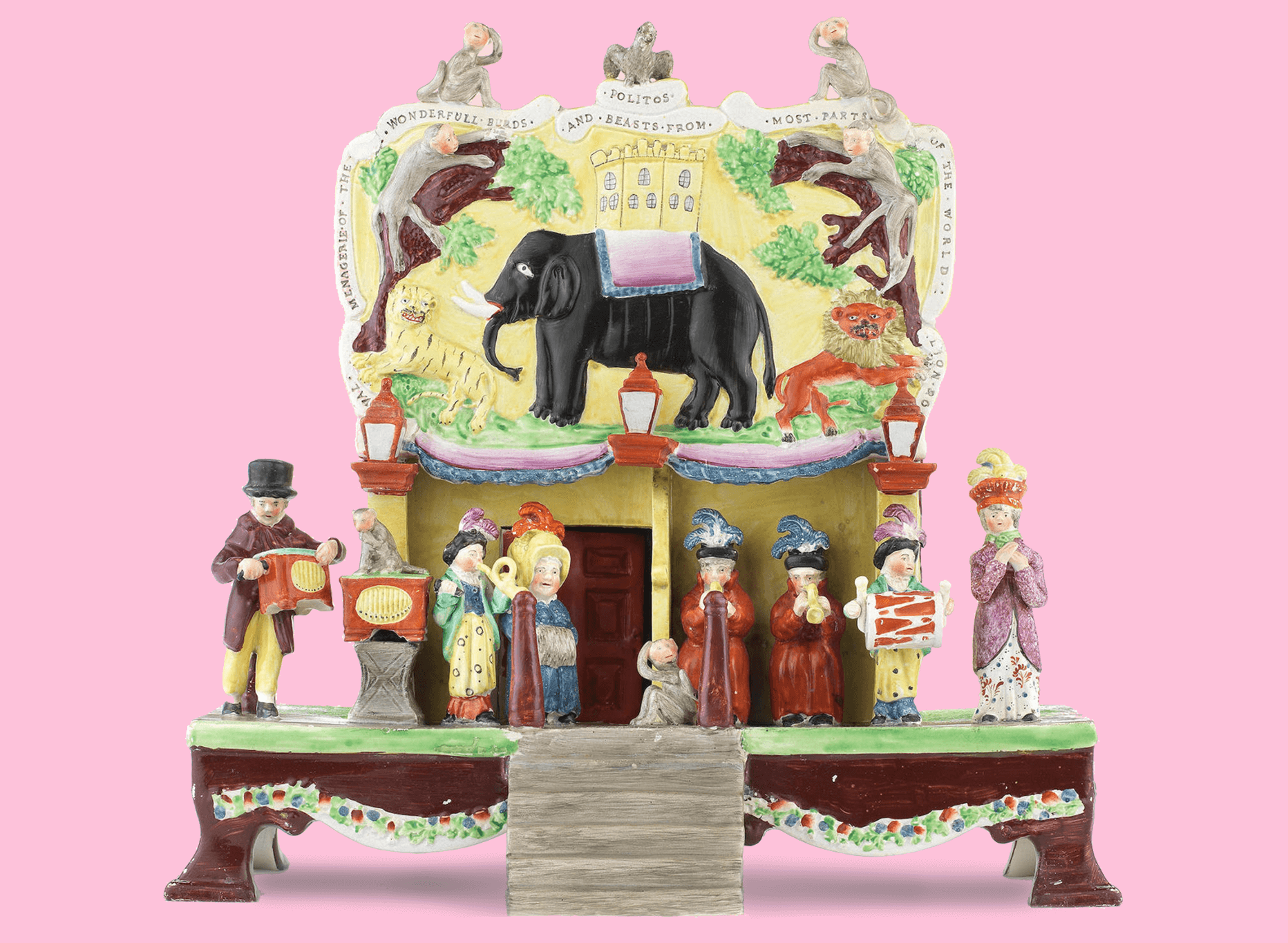Watch stand
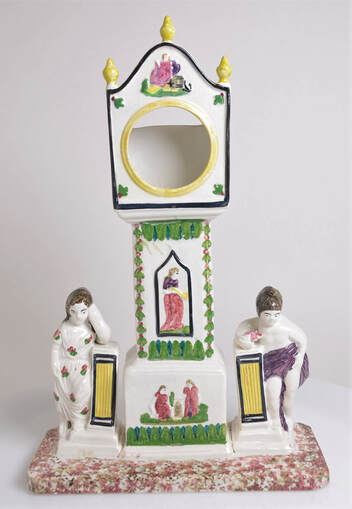
Clocks were expensive and therefore only found in the homes of the better off in the eighteenth and early nineteenth centuries. However, the master of the house generally had pocket watches and the Staffordshire potters were quick to latch onto a way of selling their wares by producing watch holders of all types. This is an early nineteenth century example with typical early decoration in prattware colours. The figures to the side of the clock are in classical dress which epitomises the fashion of the time.
The master of the house would return home in the evening from wherever he had been during the day, detach his watch from its Albert chain and place it in the watch stand so it gave the household a timepiece they could use during the time he was at home. This particular piece is interesting as it has two holes in the base so that the watch stand could be screwed to the overmantel or shelf where it stood, so it was secure and could not be accidentally be knocked over or broken.

More Figures of the month

Rare figure of Victorian card playing
At first glance, this may appear to be an ordinary arbour figure. But upon closer inspection, one can see these three people are engaged in a game of cards.
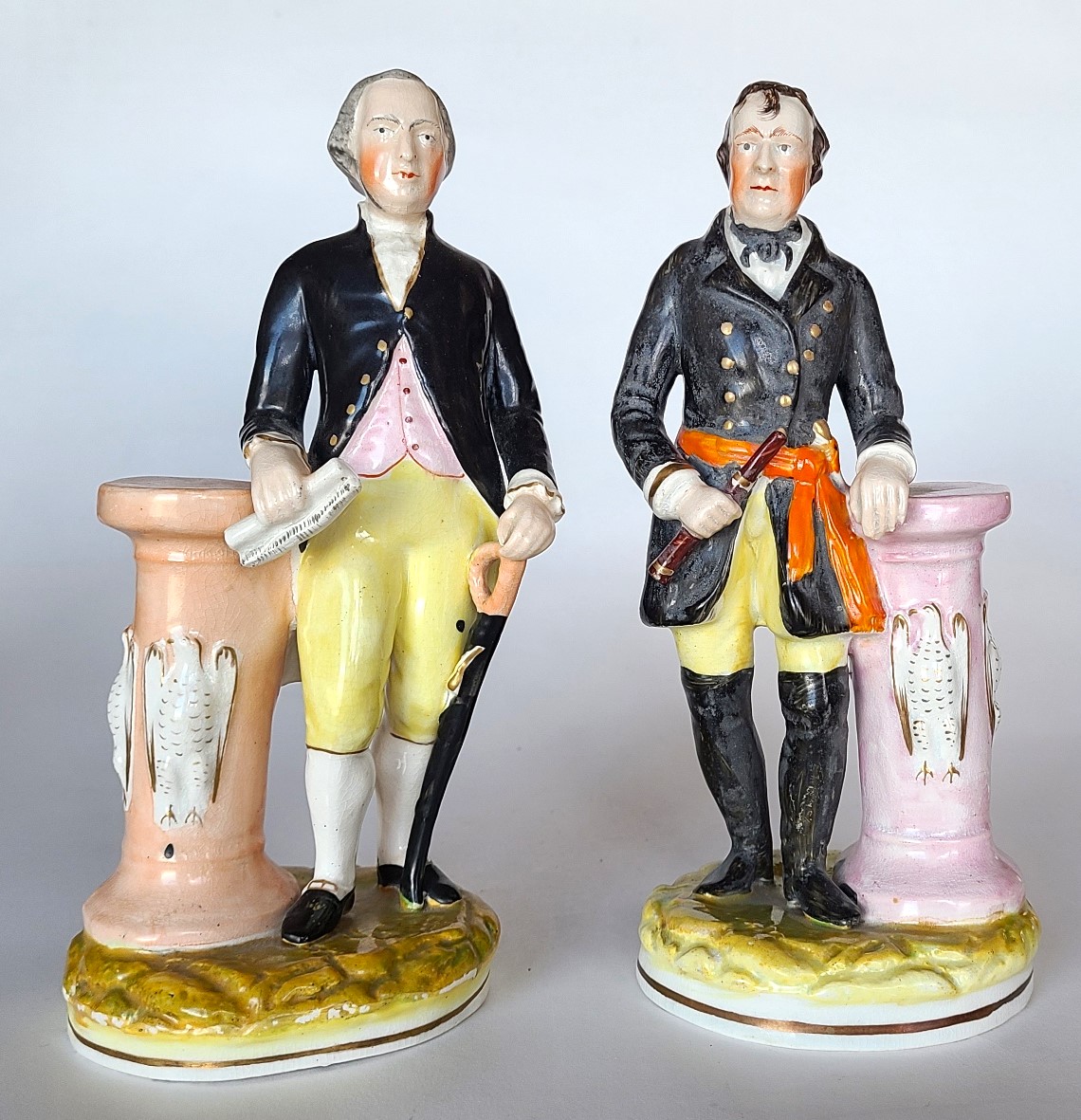
George Washington and Zachary Taylor
This is a very rare pair of figures portraying George Washington and Zachary Taylor. They stand approximately 9” and 9.1″ tall, and date to approximately 1850.
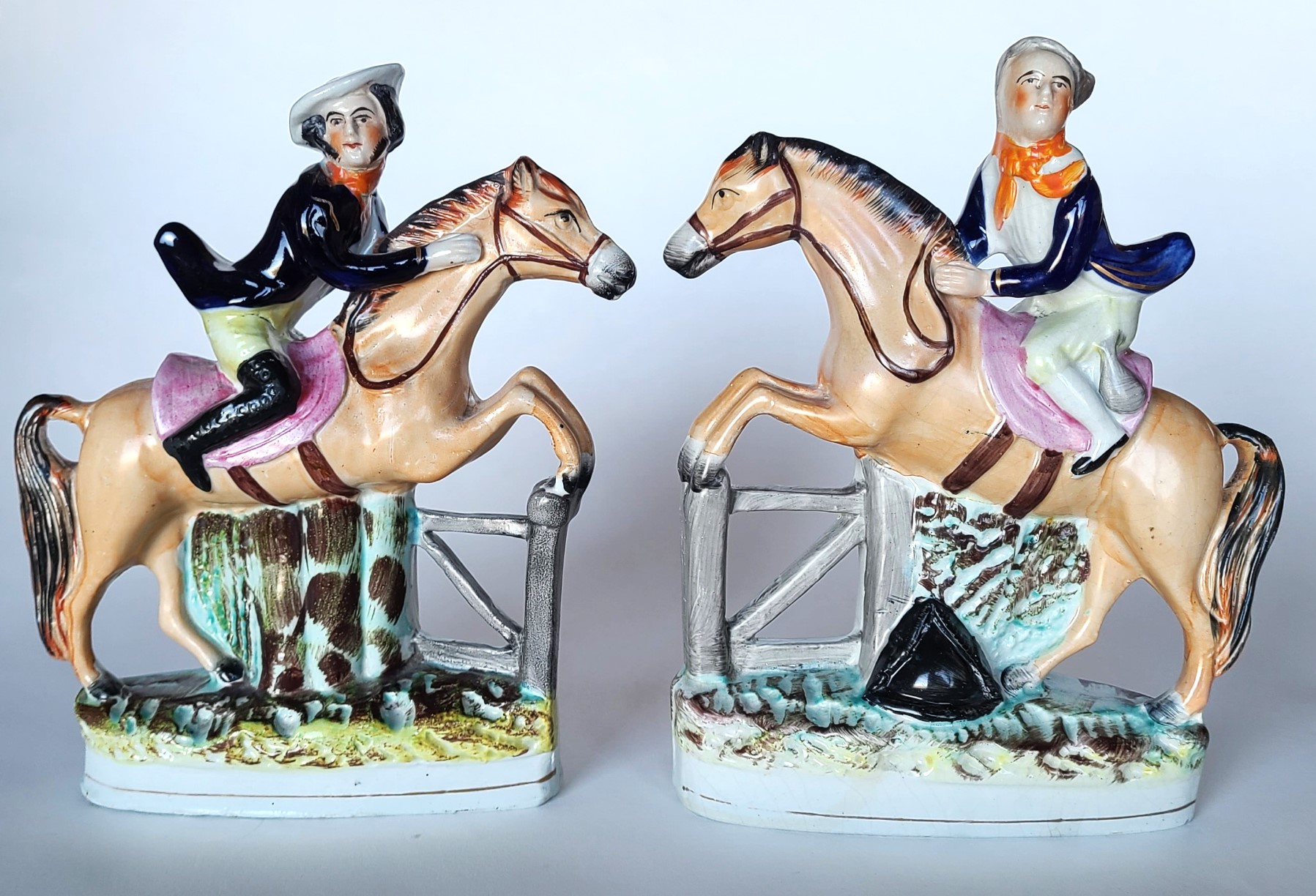
Tam O’Shanter and John Gilpin
This is a very rare pair of figures portraying Tam O’Shanter and John Gilpin. They stand approximately 8.6″ and 9.0″ tall, and date to approximately 1845.
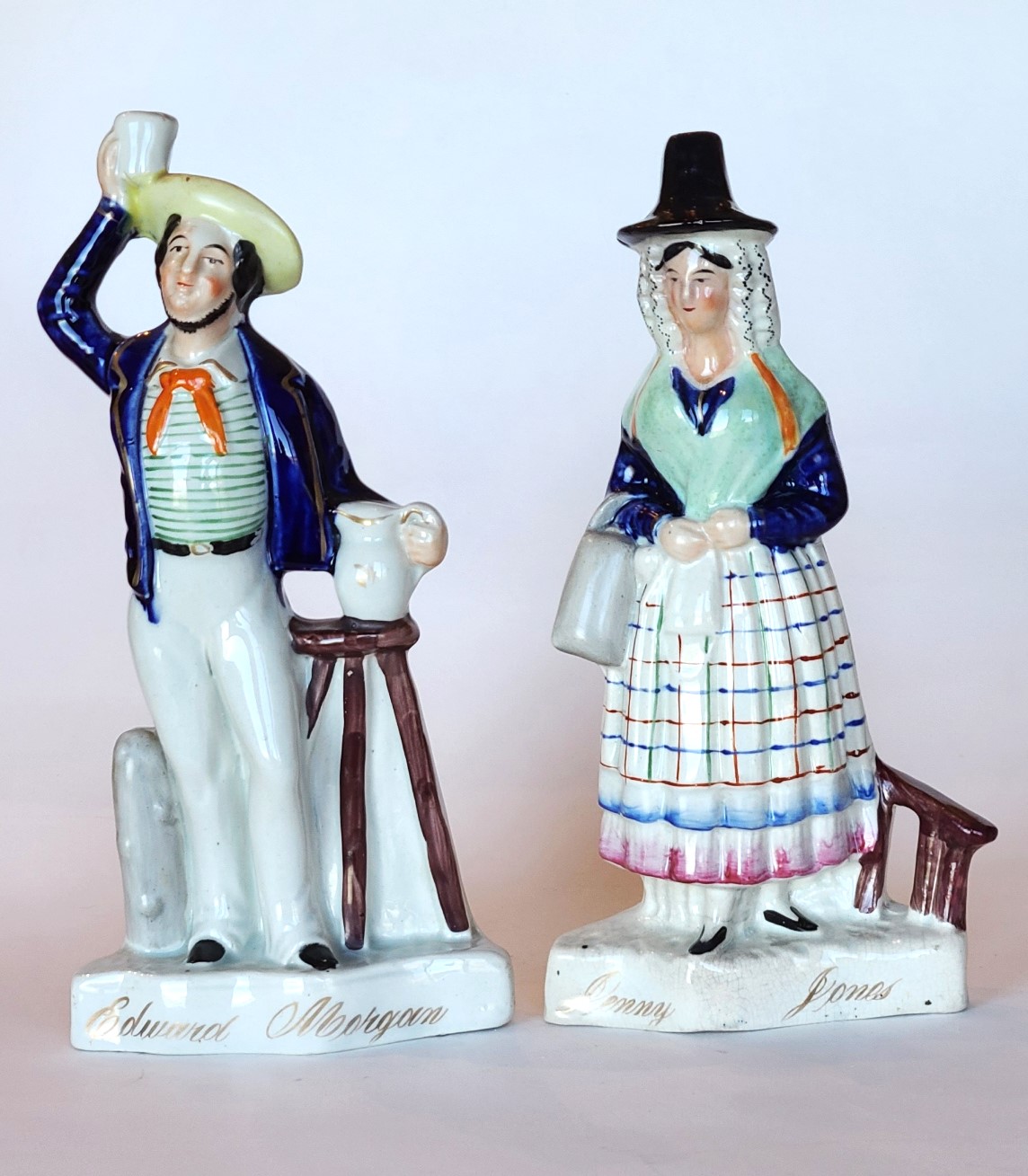
Edward Morgan and Jenny Jones
This is a rare pair of figures portraying Edward Morgan and Jenny Jones, titled with gilt script. The romantic tale of Morgan and Jones was set to music in 1825 by Charles James Mathews.
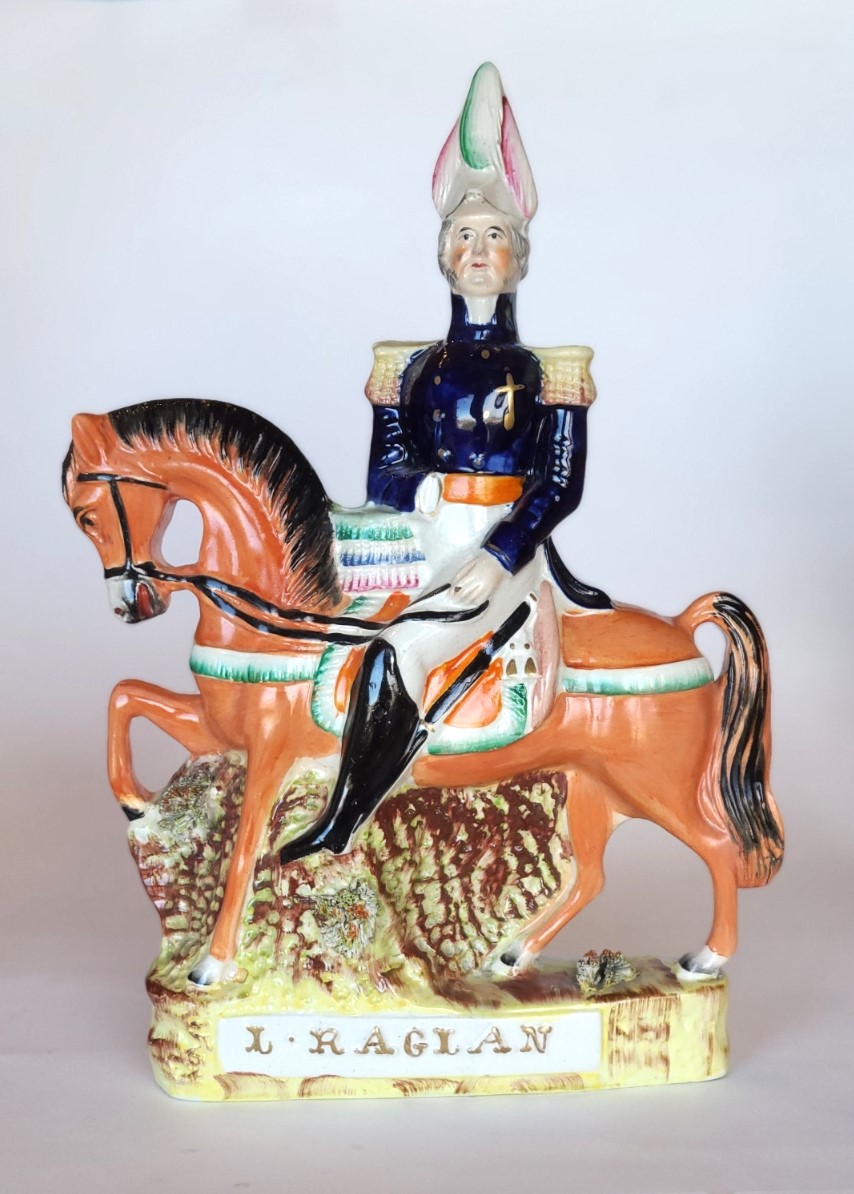
Field Marshal Fitzroy Raglan
This is a rare figure of Field Marshal Fitzroy Raglan. The figure stands about 12 1/4” tall and dates to about 1854.
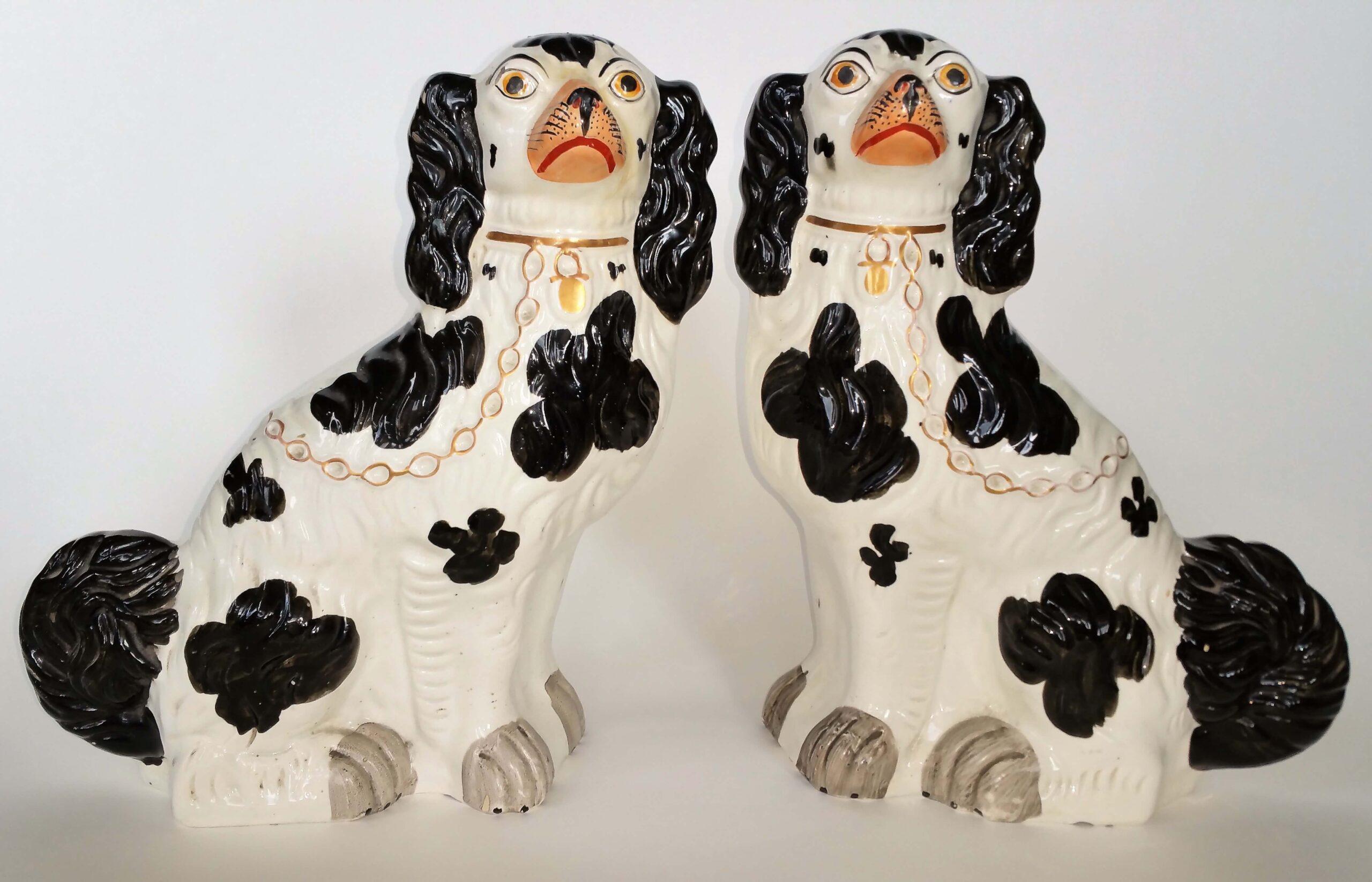
Black and white spaniels
This is fine pair of #1 black and white Staffordshire spaniels. They have a raised number one on the underside, designating them as the largest in a series of six sizes, number six being the smallest.
Membership
We warmly welcome new members – join us for free!
Wherever you are in the world, whether you are an experienced collector, a researcher interested in the folk art of England, or just someone who is intrigued by Staffordshire figures, please join us and get the rest of this year for free! Stay with us next year and pay an annual fee of £45 / $50 per household in January.
